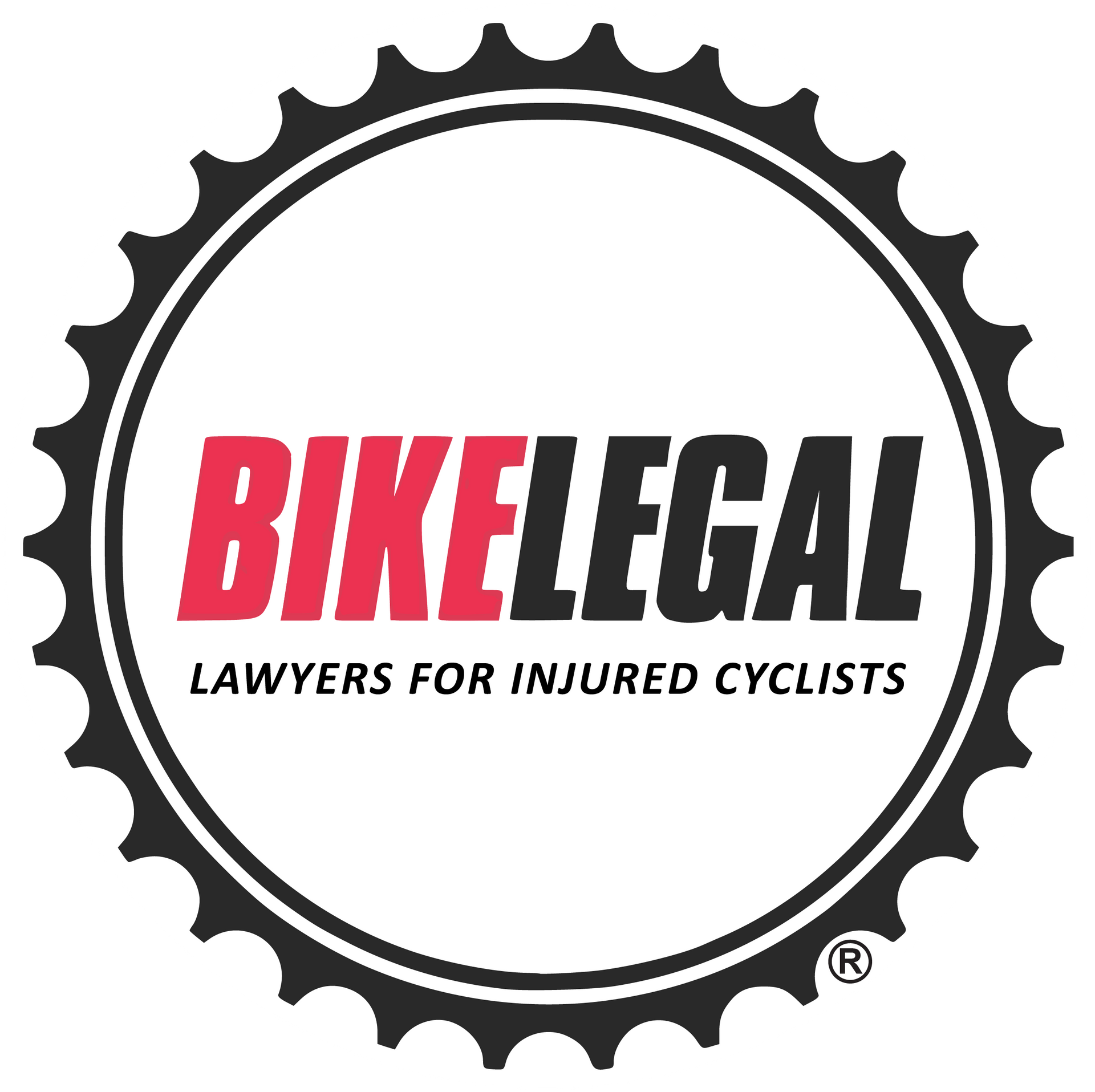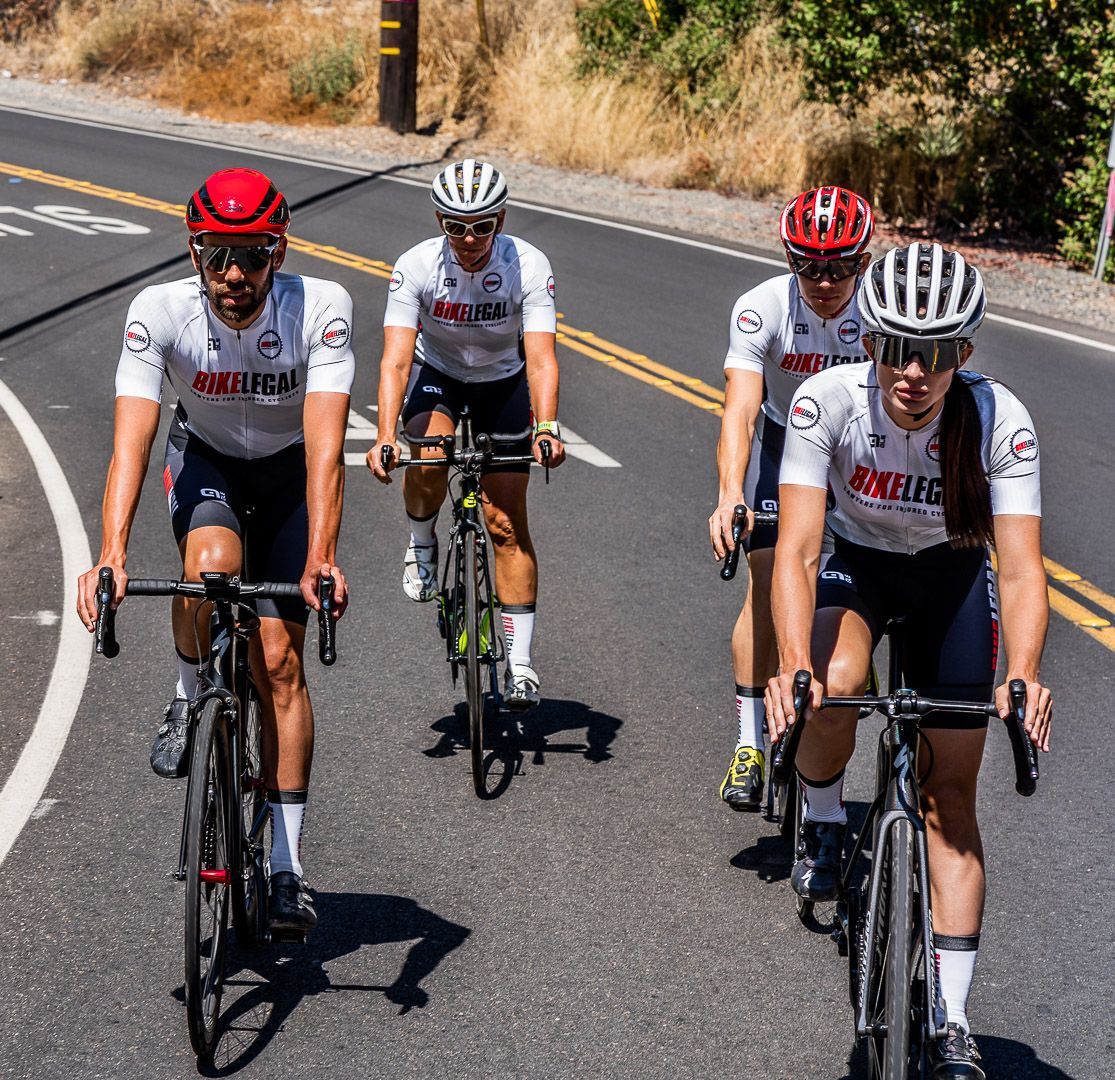California OmniBike Bill AB1909: What It Means for Cyclist Safety
Follow us on
social media!
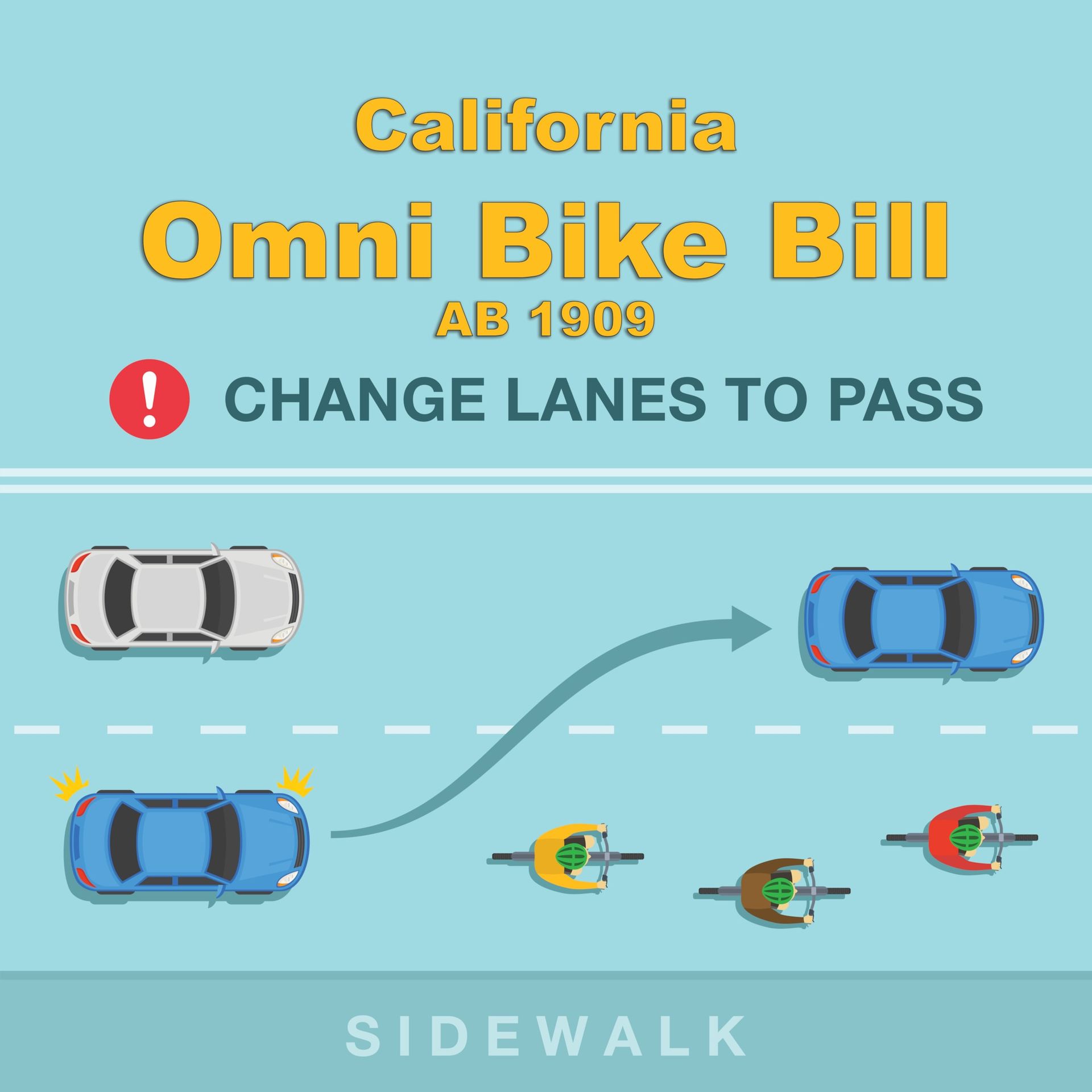
California's OmniBike Bill AB1909 marks a significant step forward in improving cyclist safety across the state. The new legislation expands upon existing bicycle regulations, most notably introducing a transformative adjustment to the 3-foot safe passing rule.
Under this new law, drivers are now required to change lanes entirely when overtaking a cyclist, as long as another lane is available and the maneuver can be done safely. This article will delve into the specific provisions of AB1909 and explore how these updated regulations will create a safer and more predictable environment for all road users.
In this article, we will guide you on how OmniBike Bill AB 1909 regulations have helped to enhance cyclist safety.
- What is OmniBike Bill AB1909
- OmniBike Bill AB1909 regulations
- How the bill improves cyclist safety
- Does AB 2264 contradict with AB 2147
- Some Additional California’s Laws for Bicyclist Safety
What is OmniBike Bill AB1909?
In California, the harmony of bicycles and motor vehicles on the road has long been a concern. The increasing number of bicycle-related incidents brought an urgent call for action.
Recognizing the urgent need for more protective measures and to promote harmonious coexistence between cyclists and motorists, the state had no option but to introduce the OmniBike Bill, AB 1909 - a legislative response to ensure cyclists' safety and promote peaceful coexistence with motorists.
- The Significance: Signed by Gov. Gavin Newsom on September 16, 2022, and championed by Assemblymember Laura Friedman, AB1909 brings a pivotal shift in California's approach to bicycle safety.
- The Changes: AB1909 modifies the California Vehicle Code with four key changes, each tailored to address the unique needs of bicyclists:
- Road Sharing Safety: Enhancing how bicyclists and motorists share the road.
- E-Bike Accessibility: Increasing access to electric bicycles.
- Legalizing Common Sense Biking: Recognizing biking practices that make sense for cyclists but don't fit traditional car rules.
- Safe Access to Bikeways: Ensuring bicyclists have secure routes on public streets and bikeways.
- The Impact: These changes are seen as a major step in acknowledging cyclists' rights and improving road safety for everyone.
- The Implementation: Thanks to Laura Friedman's efforts, this transformative law came into effect on January 1, 2024, marking a new chapter for cycling in California.
What Are The Four Bike-Friendly Code Changes In The OmniBike Bill AB1909?
Let's delve into the enhancements AB 1909 brings to the forefront, aimed at making California's roads safer and more inclusive for everyone on two wheels.
1. Change in passing regulations
California’s Vehicle Code 21760, known as the 3-foot rule, was enacted in 2013 and meant that a motor vehicle overtaking a cyclist must maintain a 3-foot distance. This regulation aimed to safeguard cyclists by ensuring a safe passing distance between them and motor vehicles. However, accurately measuring this distance while driving proved to be a challenge, and compliance was inconsistent.
Solution: The OmniBike Bill AB1909 introduces a significant change in this law. Now, instead of maintaining a vague three-foot margin, drivers are required to change lanes entirely when passing a bicyclist, provided another lane is available, and the maneuver can be performed safely.
Read More: Bigger Cars Means Less Space for Cyclists
2. Prohibition of bicycle licenses
Municipalities in California had the authority to require bicycle licenses, a policy laid out in Section 39003 of the Vehicle Code. These bicycle licensing laws were occasionally used to target cyclists, sometimes leading to discriminatory enforcement practices.
Solution: The OmniBike Bill effectively resolves this issue by prohibiting cities and counties from requiring bicycle licenses. This reduces unnecessary stops and checks by law enforcement, ensuring that all cyclists, regardless of background, can ride freely and without undue hindrance.
3. Access for class 3 electric bike

Class 3 electric bikes, known for their higher speed capabilities, faced restrictions under Section 21208.5 of the California Vehicle Code. Some paths and trails didn't allow electric bikes, so people could only ride them in some places. This made it harder for e-bikes, which are good for the environment, to become more popular.
Solution: The OmniBike Bill lays the foundation for greater accessibility permitting Class 3 e-bike riders access to bike paths and lanes. However, local authorities and the Department of Parks and Recreation still have the right to ban electric bicycles from the following:
- Equestrian trails
- Recreational or multi-use trails
- Hiking trails
4. Intersection crossing regulations

Crossing intersections on a bicycle has traditionally been governed by the same signals that direct motor vehicle traffic, as outlined in Section 21456 of the Vehicle Code. This often made cyclists feel unsafe because they had to cross busy intersections without any special accommodations for their safety needs.
Solution: With the OmniBike Bill AB1909, cyclists are now permitted to cross intersections in response to pedestrian walk signals. This adjustment grants cyclists a head start, allowing them to begin crossing before vehicular traffic moves, thereby enhancing visibility and reducing the likelihood of collisions.
How Does The OmniBike Bill AB1909 Improve Cyclist Safety?
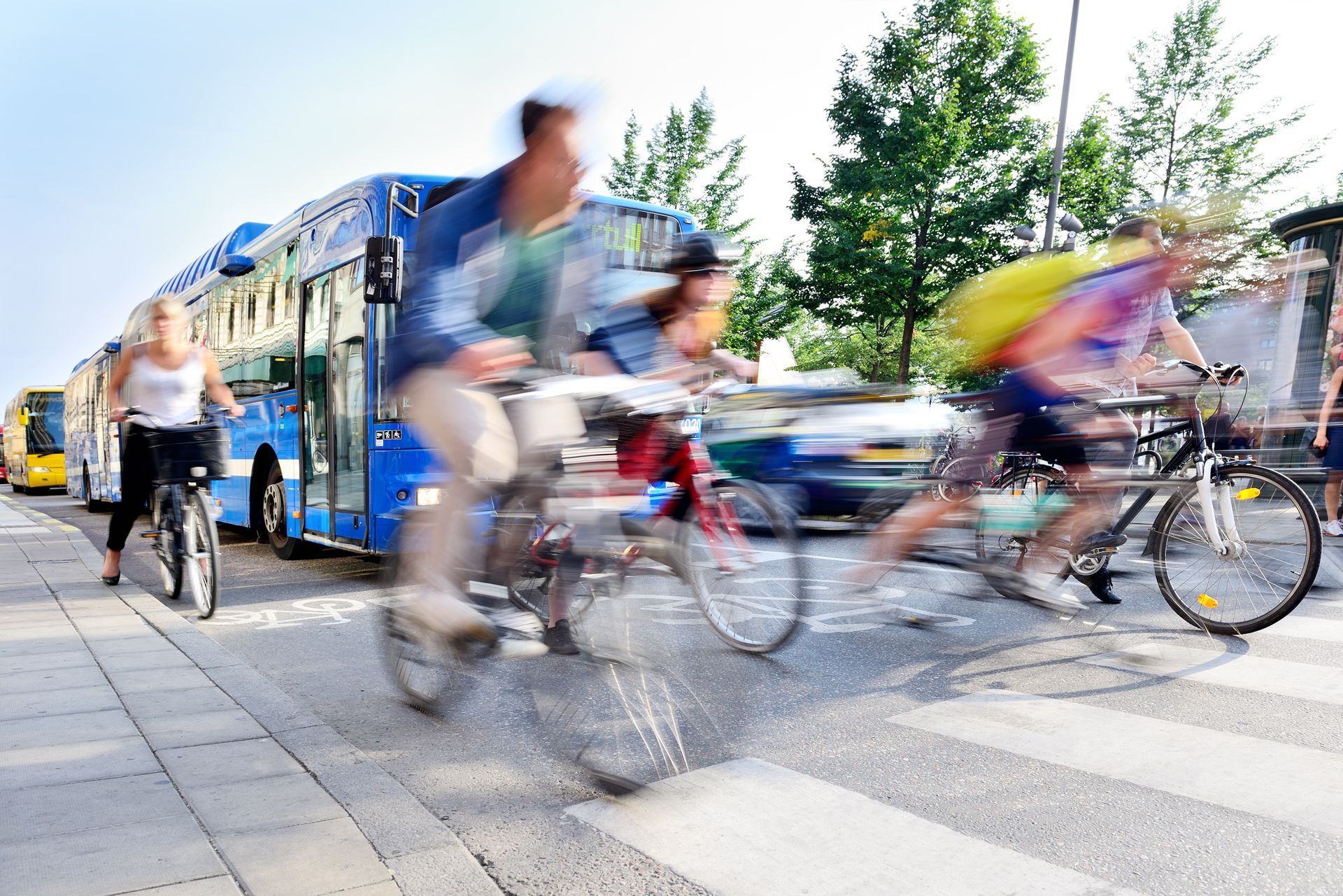
The OmniBike Bill AB1909 introduces groundbreaking changes in the California Vehicle Code to redefine road safety for cyclists.
Let's explore how these legislative adjustments create a safer, more inviting environment for cycling enthusiasts and daily commuters.
- Increased predictability on roads: The OmniBike Bill establishes definitive rules for passing cyclists, like headstart of cyclists on walk lanes, making it easier for motorists to anticipate cyclists' presence and movements. This predictability reduces the chance of accidents caused by sudden maneuvers.
- Legal clarity for motorists and cyclists: By setting clear guidelines, both cyclists and drivers have a better understanding of their respective rights and duties. This clarity diminishes misunderstandings that can lead to dangerous situations. It ensures that all road users are on the same page regarding how to safely share the road, fostering a safer cycling environment.
- Minimized road tensions: The bill's clear regulations help ease the common tension between cyclists and motorists, often caused by confusion and frustration over road space sharing. By knowing the rules, motorists can pass cyclists without encroaching on their space, and cyclists feel respected and safer.
- Smoother traffic circulation: Defined behaviors at intersections and during passing facilitate more fluid traffic flow, as drivers and cyclists alike understand how to navigate these situations. This reduces the likelihood of bottlenecks and accidents, which can occur when road users are uncertain of how to proceed.
- Enhanced legal recourse: With specific protections in place, cyclists involved in accidents or near-misses have clearer avenues for legal action against motorists who violate their rights. This aspect of the bill not only serves to penalize wrongful behavior but also acts as a deterrent against negligence.
- Reduced accident rates and injuries: The cumulative effect of the OmniBike Bill’s measures is anticipated to lead to a significant reduction in cyclist accidents and injuries. With safer passing laws, improved intersection crossing guidelines, and enhanced legal protections, cyclists are less likely to encounter situations that lead to accidents.
Does AB 2264 from the OmniBike Bill Conflict with AB 2147?
AB 2264 from the OmniBile Bill works in tandem with AB 2147, also called the Freedom to Walk Act. It fosters a safer and more integrated approach to road safety, demonstrating no conflict between the two laws.
AB 2147 (Freedom to Walk Act)
The Freedom to Walk Act puts a stop to law enforcement's ability to issue jaywalking tickets to pedestrians who choose to cross the street away from designated intersections or crosswalks, provided their action is considered safe and necessary.
This law enhances pedestrian safety by revising jaywalking laws. It allows pedestrians the freedom to cross roads outside of designated crosswalks without facing penalties as long as their actions are deemed safe and do not constitute a safety hazard.
AB 2264
AB2264, within the OmniBike Bill framework, similarly focuses on ensuring safety for both pedestrians and cyclists, particularly concerning how they navigate crossings with official traffic control signals.
It allows both pedestrians and cyclists the right to proceed across California streets walk signals, provided there is a bicycle control signal indicating a three- to seven-second head start.
AB 2147 and AB 2264 law specifications
Both laws enforce the subsequent rules which are usually pedestrian control signals exhibiting:
- The 'WALK' signal: A pedestrian control signal displaying a 'WALK' symbol indicates that pedestrians and cyclists may cross in the direction of the official traffic control signal, promoting orderly and safe crossing practices.
- Countdown crossing: A flashing 'DON’T WALK' or 'WAIT' signal with a countdown allows pedestrians and cyclists to begin crossing, with the expectation that they complete their crossing promptly before the countdown expires, ensuring they do not remain in the roadway unnecessarily.
- DON'T WALK' alert: A steady 'DON’T WALK' or 'WAIT' signal without a countdown advises against starting a crossing, prioritizing the safety of road users by reducing potential conflicts with vehicular traffic.
- Mid-crossing guidance: If the 'DON’T WALK' signal appears while a pedestrian is already crossing, they must continue to the nearest sidewalk or safety zone, encouraging quick and safe clearance of the roadway.
Additional California Laws for Bicyclist Safety
In addition to the general rights and responsibilities shared with motor vehicle drivers, the California Vehicle Code(VEH) has established specific laws aimed at ensuring the safety of bicyclists on the road.
The bicycle lane established pursuant to the California Vehicle Code and Streets and Highways Code allows for specific regulations regarding the operation of bicycles on roadways.
According to the code, operators of bicycles are required to use either a bicycle lane or bicycle path if available to them. These laws detail how bikes should operate under various conditions in California, providing clear guidelines. Here's a concise overview of these additional laws for bicyclist safety:
- Right to Use Lane: If you're cycling at the same speed as traffic, you can ride in any part of the lane. If moving slower, you can take the whole lane when the road is too narrow while analyzing the safety and traffic conditions to fit side by side easily. (VEH 21202)
- Bike Lane Usage: When a bike lane is present, and you're moving slower than traffic, use it unless you're turning left, passing, avoiding hazards, or at a right-turn point. (VEH 21208)
- Separated Bikeways: Bicyclists are not obligated to use protected bike lanes (separated by barriers) and may ride outside them for any reason. (SHC 890.4d)
- Direction of Travel: Always ride on the right, in the same direction as traffic, except in specific situations like passing or road closures. (VEH 21650).
- Hand Signal: Bicyclists can use hand signals to indicate whether they are going to turn left or right. For example, to signal a left turn, extend your Left arm out. Hold your left arm up with your elbow bent for a right turn, and to signal to stop or slow down, extend your left arm down. However, it's essential to analyze traffic or roadway conditions before using hand signals. ( VEH 22111)
- Bike Path Rules: It's illegal to block or park any vehicle on a bicycle path. (VEH 21211)
- Braking System: Your bike must have brakes capable of making at least one tire skid on dry pavement. (VEH 21201(a))
- Handlebar Height: Handlebars shouldn't be higher than the rider's shoulders. (VEH 21201(b))
- Bicycle Size: The bike should fit the rider well enough to allow stopping and starting safely while supporting the bike with one foot on the ground. (VEH 21201(c))
- Helmet Law: Bike riders and passengers under 18 must wear helmets. (VEH 21212)
- Earphones: Wearing earplugs or headsets covering both ears is prohibited except for hearing aids. (VEH 27400)
- Cell Phone Use: Cyclists can use handheld cell phones, but it's advised to remain cautious. (VEH 23123)
- Alcohol and Drugs: Riding under the influence is prohibited. (VEH 21200.5)
- Hitching Rides: Attaching oneself to vehicles is not allowed. (VEH 21203)
- Carrying Items: Cyclists must not carry anything that prevents them from keeping at least one hand on the handlebars. (VEH 21205)
Read More: Cycling Laws in the United States
Want to Claim Your Loss After an Accident? Bike Legal Can Help You Out
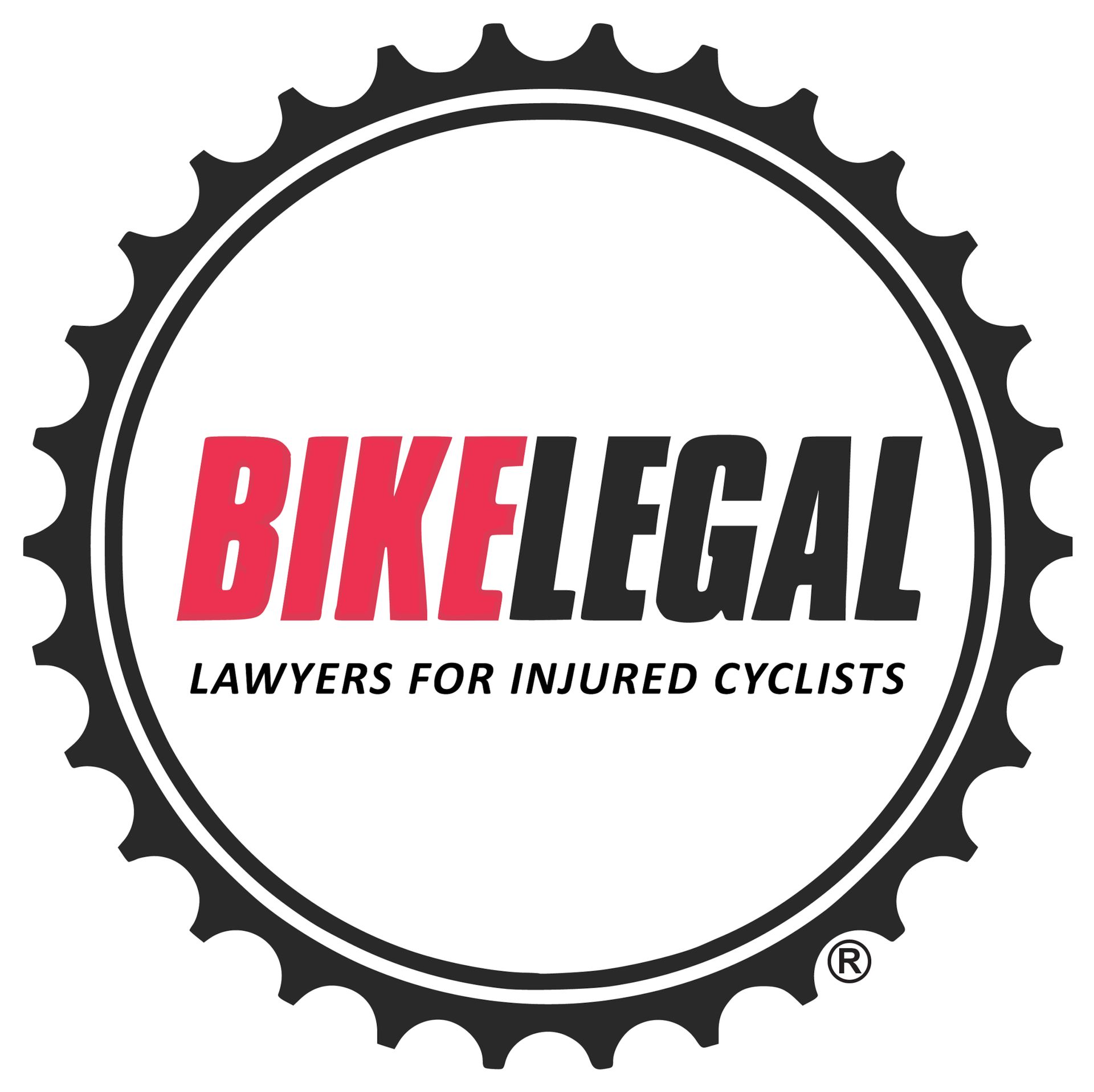
Nowadays, where aggressive driving is increasingly common, cyclists face a heightened risk of accidents, particularly from being struck from behind. We've thoroughly examined how the Omni Bike Bill AB1909 has introduced pivotal changes to laws aimed at bolstering cyclist safety.
Road accidents can still happen, even when all laws are followed, and enhanced safety measures are in place. In these unpredictable circumstances, having access to the best legal support is crucial. Bike Legal can help you through expert legal representation, skillful insurance negotiations, and comprehensive legal advice designed specifically for cyclists.
Request a free consultation by calling 877-BIKE LEGAL (877 245-3534) or submitting a form.

Frequently Asked Questions (FAQ's)
Is it legal to ride a bike in a crosswalk in California?
In California, it is generally legal to ride a bicycle in a crosswalk unless prohibited by a local ordinance. When riding in a crosswalk, cyclists must yield the right of way to pedestrians. Cyclists should ride at a safe speed and be mindful of pedestrians.
Do cyclists have to stop at stop signs in California?
As of now, cyclists in California must stop at stop signs. Assemblymember Tasha Boerner has authored bills in 2021 and 2022, specifically aiming to legalize the "bicycle safety stop," also known as the "Idaho stop," where cyclists can treat stop signs as yield signs. Unfortunately, both attempts were vetoed by Governor Gavin Newsom, due to safety concerns.
Currently, Assembly Bill 73 (AB 73), authored again by Boerner in 2023, is making its way through the legislative process. It has already passed the Assembly and is pending in Senate committees. If it becomes law, it would allow adults on bicycles to perform a stop-as-yield at stop signs. However, until any bill is successfully signed into law, cyclists are legally required to come to a complete stop at stop signs in California.
What is the new bike law in California?
The new bike law in California, known as the OmniBike Bill AB1909, introduces several changes aimed at improving safety for cyclists. These include requiring drivers to change lanes when passing cyclists if possible, prohibiting the requirement for bicycle licenses by cities and counties, allowing Class 3 electric bikes on certain paths and lanes, and permitting cyclists to cross intersections in response to pedestrian walk signals.
Read Next:
